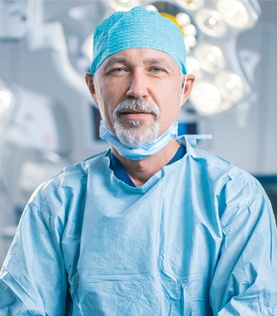
Neurological rehabilitation is designed to help treat patients with nervous system or neurological diseases. Rehabilitation aims to increase function, reduce debilitating symptoms, and improve a patient’s quality of life. The types of rehabilitation treatments recommended depend on the areas of the body affected by the neurological condition.
Any patient with a neurological condition may be referred for rehabilitation through a prescription or order provided by a doctor.
Symptoms that may prompt the need for neurological rehabilitation include:
Neurological rehabilitation consists of 7 phases: They are based on the severity of the neurological injuries and their symptoms. They are measured e.g. using the so-called Barthel Index, which measures independence in everyday life. The phase in which the patient is determines the treatment.
Intensive care unit
The patient’s consciousness is usually still severely impaired. Intensive care treatment options are still needed. Rehabilitative measures are intended to improve the state of consciousness. Inclusion criteria: Permanent ventilation is no longer required, circulation is stable, injuries have been treated, no intracranial pressure.
The patient can already actively participate in the therapy, but still needs to be cared for with high nursing effort. The rehabilitation aims at partial mobilization.
Starts after completion of the early mobilization and represents medical rehabilitation in the traditional sense.
This is mostly about professional, social, and domestic reintegration. The treatment results are to be maintained.
Activating treatment care for patients in a vegetative state.
The patient is assisted in finding his way back to an independent life – helping people to help themselves.
What new technical treatment options are there?
In addition to the established forms of therapy, such as physiotherapy, occupational therapy, speech therapy, massage therapy and psychology, there are several new technologies available:
Neurofeedback: If various neural pathways (information pathways) have been completely and irreversibly destroyed, a “bypass” is used to transfer the information either from the brain to the periphery or from the periphery to the brain.
Who is in charge of the neurological rehab?
Neurological rehabilitation requires a transdisciplinary team. This comprises not just physicians and social workers, but also e.g. bioengineers and computer scientists. During its work, the team has to take into account the changes occurring over the course of the disease process.
Modern rehabilitation should follow a “3T” approach. This means Treatment – Technology – Translationality (development). Treatment and technology must be interconnected; developments should take place in parallel.
Unfortunately, modern technologies in neurological rehabilitation are no panacea. However, they open the possibility of individual and thus personalized rehabilitation. Each neurological disorder must be considered as an individual, patient-related process in order to enable the patient to get the best possible therapy.
While a patient will still have a primary care medical team, the rehabilitation team provides additional treatments and therapies. The rehabilitation team consists of highly skilled professionals dedicated to each patient’s needs. The most appropriate treatment plan for each patient is developed after an evaluation. Neurological rehabilitation may include some of the following team members:
Open visitation with only two visitors in a room at any given time. No one under 12 years of age may visit without permission .
Open visitation with only two visitors in a room at any given time. No one under 12 years of age may visit without permission .
We will send you a confirmation within 24 hours. Emergency? Call 1-2554-2356-33
Although pulmonary medicine only began to evolve as a medical specialty in the 1950s, William Welch and William Osler founded the ‘parent’ organization of the American Thoracic Society, the National Association.
Error: Contact form not found.
158 A Shah Jamal, Lahore 54000
+92 301 4857543
info@ntarcp.com
